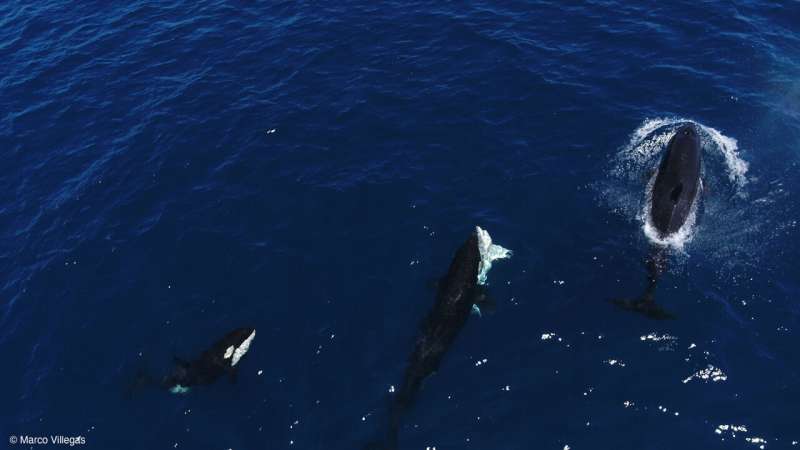A specialized pod of orcas, known as Moctezuma’s pod, has been observed hunting and killing young great white sharks in the Gulf of California. This behavior, captured on video, reveals a sophisticated hunting technique where the orcas flip the sharks upside-down to consume their nutrient-rich livers. Such actions suggest that orcas may be adapting their hunting strategies in response to changing marine environments.
Marine biologist Erick Higuera Rivas, project director at Conexiones Terramar and Pelagic Life, emphasizes the intelligence and social learning exhibited by these orcas. “This behavior is a testament to orcas’ advanced intelligence, strategic thinking, and sophisticated social learning, as the hunting techniques are passed down through generations within their pods,” he explains.
Details of the Hunts
During routine monitoring, scientists documented two separate hunts involving the pod, resulting in the death of three juvenile white sharks. The hunts occurred in August 2020 and August 2022. In the first instance, five orcas worked together to push a juvenile shark to the surface, flipping it upside-down and ultimately consuming its liver. A similar scenario unfolded with a second shark shortly thereafter.
In the second documented hunt, also involving five orcas, the team again flipped a juvenile shark onto its back. This method induces a state known as tonic immobility, effectively paralyzing the shark and allowing the orcas to access its organs with minimal risk of injury. Higuera notes that this technique may be easier to execute on younger sharks, which are less experienced at evading predators.
Shifts in Shark Populations
The changing dynamics of shark populations in the Pacific may have created new opportunities for Moctezuma’s pod. Climate events, such as El Niño, have altered the distribution of great white shark nursery areas, increasing their presence in the Gulf of California. As a result, juvenile sharks may now be more vulnerable to predation by orcas.
Dr. Salvador Jorgensen from California State University highlights the differences in behavior between juvenile and adult sharks. “Adult white sharks react quickly to hunting orcas, completely evacuating their seasonal gathering areas and not returning for months. But these juvenile white sharks may be naive to orcas,” he states. The underlying question remains whether these anti-predator responses are instinctual or learned.
The identification of the hunting pod as Moctezuma’s pod, named after a prominent member, adds further context. The pod has previously been observed hunting rays and other shark species, suggesting they may have refined their hunting techniques through varied experiences.
Future research aims to clarify the dietary habits of this orca population. Dr. Francesca Pancaldi from the Instituto Politécnico Nacional emphasizes the need for comprehensive studies to understand their feeding behaviors better. “Generating information about the extraordinary feeding behavior of killer whales in this region will lead us to understand where their main critical habitats are, so we can create protected areas and apply management plans to mitigate human impact,” she notes.
The findings from these observations represent a significant addition to our understanding of orca hunting strategies and their interactions with juvenile great white sharks. As studies continue, they may reveal even more about the intricate dynamics of these marine predators in a changing ocean environment.







